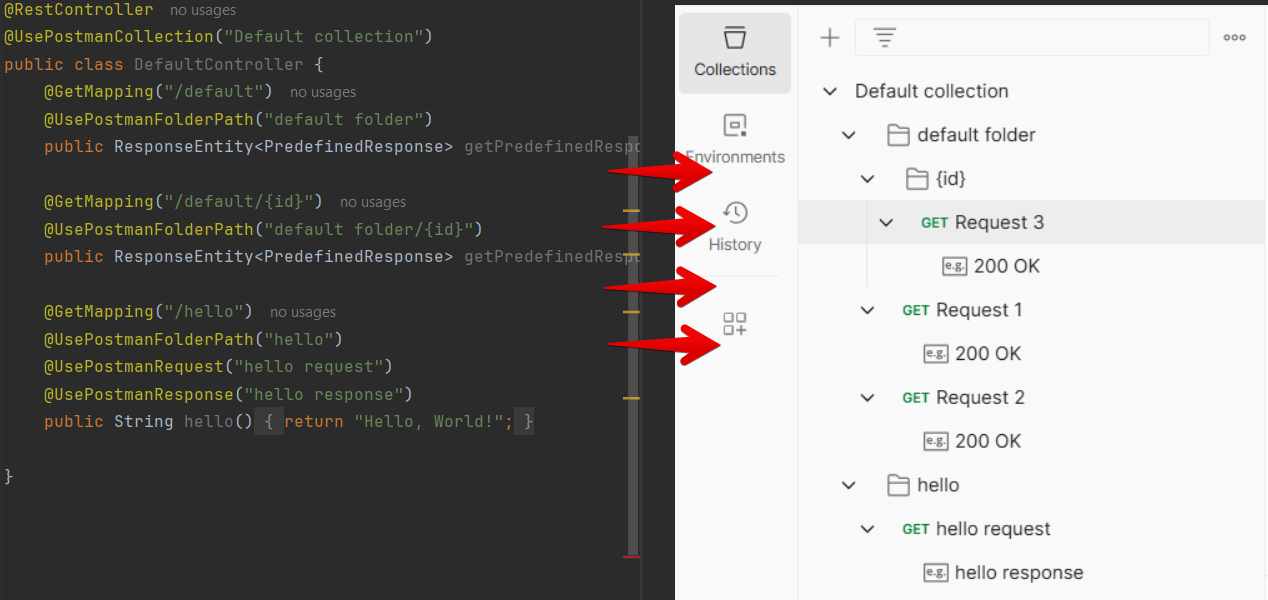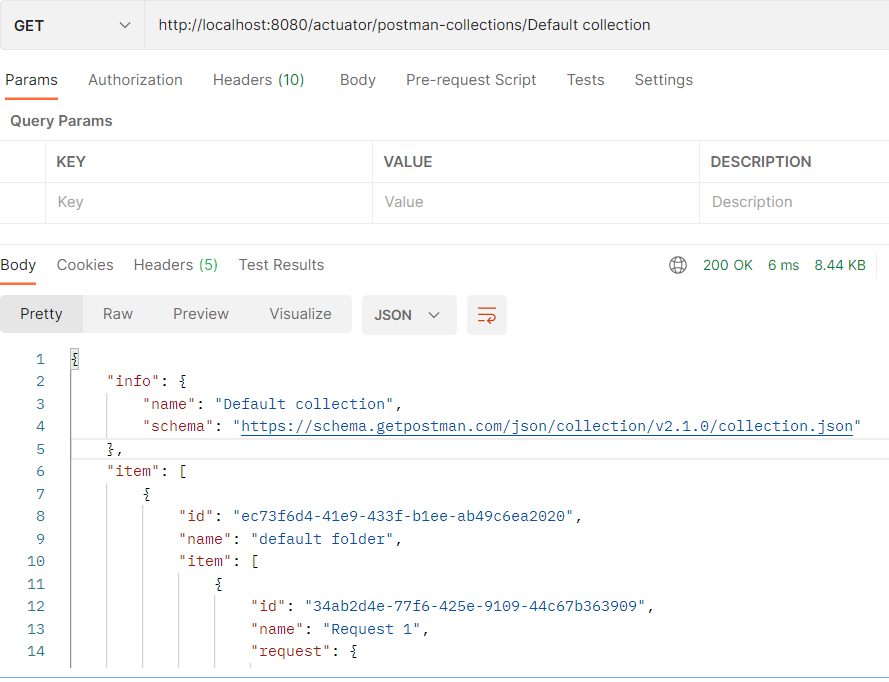Spring Interceptor
In order to use Postman4j with Spring, you need to:
- add the
spring-interceptordependency to your projects - Annotate you controller methods with
@UsePostmanCollectionannotation and endpoints with@UsePostmanFolderPath,@UsePostmanRequestand@UsePostmanResponseif needed. - Run your application with bootRun
- Call some of your endpoints
- Go to
http://localhost:8080/actuator/postman-collections/{your collection name}to get your generated postman collection
Full setup example is available in the Postman4j Spring Demo .
Installation
gradle
implementation group: 'dev.jora.postman4j', name: 'spring-interceptor', version: '0.0.4'Usage
Register interceptor filter
Prepare postman4j settings for your application. You can set up the settings in the application.properties file or create a PostmanSettings bean in your Spring configuration class.
@Bean
public PostmanSettings postmanSettings() {
return PostmanSettings.builder()
// ...
.build();
}Register interceptor PostmanMiddlewareFilter class for selected filters
@Bean
public FilterRegistrationBean<PostmanMiddlewareFilter> postmanMiddlewareFilterRegistration(@Autowired PostmanMiddlewareFilter postmanMiddlewareFilter) {
FilterRegistrationBean<PostmanMiddlewareFilter> registrationBean = new FilterRegistrationBean<>();
registrationBean.setFilter(postmanMiddlewareFilter);
registrationBean.addUrlPatterns("/*");
return registrationBean;
}
@Bean
public PostmanMiddlewareFilter postmanMiddlewareFilter(@Autowired PostmanSettings postmanSettings) {
return new PostmanMiddlewareFilter(postmanSettings);
}Set annotations for your controller methods in order to set custom names for your Postman collections, folders, requests and responses.
import dev.jora.postman4j.annotations.UsePostmanCollection;
import dev.jora.postman4j.annotations.UsePostmanFolderPath;
import dev.jora.postman4j.annotations.UsePostmanRequest;
import dev.jora.postman4j.annotations.UsePostmanResponse;
//...
@RestController
@UsePostmanCollection("Default collection")
public class DefaultController {
@GetMapping("/default")
@UsePostmanFolderPath("default folder")
public ResponseEntity getPredefinedResponse(@RequestParam(value = "retry", defaultValue = "0") String retry) {
// ...
}
@GetMapping("/default/{id}")
@UsePostmanFolderPath("default folder/{id}")
public ResponseEntity getPredefinedResponseById(@PathParam("id") String id, @RequestParam(value = "retry", defaultValue = "0") String retry) {
// ...
}
@GetMapping("/hello")
@UsePostmanFolderPath("hello")
@UsePostmanRequest("hello request")
@UsePostmanResponse("hello response")
public String hello() {
return "Hello, World!";
}
// ...
}
(Optional) Setup as Actuator Endpoint
In order to get traceability of your requests, you can set up the Postman4j as an actuator endpoint. This will allow you to get the generated Postman collection from the actuator endpoint.
Create bean with PostmanActuatorEndpoint class
@Bean
public PostmanActuatorEndpoint postmanActuatorEndpoint(@Autowired PostmanMiddlewareFilter postmanMiddlewareFilter) {
return new PostmanActuatorEndpoint(postmanMiddlewareFilter);
}Register postman-collections endpoint in settings
management:
endpoints:
web:
exposure:
include: 'health,postman-collections'